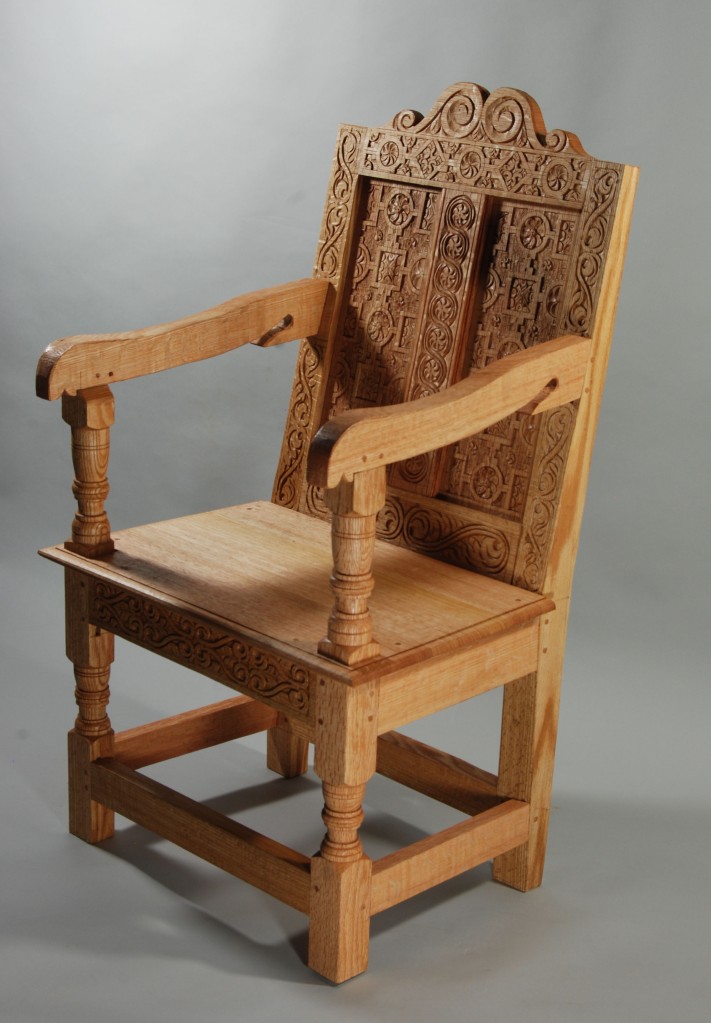I was going to call this one “twas in another lifetime…” just in case MR is still out there reading along. Thirty years ago I made this comb back Windsor chair. I got the details from Curtis Buchanan, I’m pretty sure it’s Dave Sawyer’s design.
I loved it then, I like it still. But a few things bother me about it. One – it survived (barely) some rowdiness that was a.) not mine and b.) part of a different phase of my life, best left in the past. I fixed it, but the fix was a bit hasty. The other points are the usual nonsense that we all engage in – pointing out the flaws of our work. Legs are too bulky and I wanted them kicked out more. But it’s still very comfortable – so one of those chairs that mocks me. I always wished I would made a new one. Well, the time has come, the time is now. I got the undercarriage assembled a couple of days ago. Ash legs, stretchers in maple & ash. White pine seat.
I bent and carved a couple of crests – doesn’t hurt to have an extra around.
I tried to take my time with the turnings. This was air-dried ash. Slow going but I like turning ash – it’s a lovely wood.
Here’s Curtis’ arm post in a continuous arm chair I inherited from Jennie Alexander – I aimed for this drama in my arm posts, but my pole lathe wasn’t having it. The stuff gets too whippy in the pole lathe when I try to take it so thin. But what I knew nothing about 30 years ago was old Windsors – and what I have found is the shapes/thicknesses and patterns are quite varied. So I relaxed and left my arm posts thicker than Curtis’.
I’m planning on making the top half of the chair this week. White oak arm, hickory spindles. Fingers crossed.














































